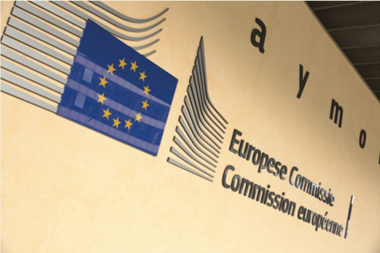The Pensions Dashboards Programme (PDP) has selected three potential pensions dashboards providers to take part in initial development of the pensions dashboards ecosystem.
In addition to the Money and Pensions Service’s (MaPS) non-commercial dashboard, the PDP selected Aviva, Bud and Moneyhub to support the early work on design standards and technology.
The three firms represent a range of different types of organisation that will likely navigate the future dashboard provider market, in that they include an insurer, an open banking platform and an open data fintech, the PDP stated.
“The ambition behind working with this range of providers is to ensure that we understand their needs and the onboarding processes works for potential dashboard providers,” it added.
The initial (alpha) test phase runs for six months from December 2021 and the PDP will coordinate with the appointed firms to prepare and connect their dashboards to the central digital architecture.
Raman Dhaliwal, head of product at the PDP, said: “We will work with them to develop and refine the standards and systems for pensions dashboards, so that we can provide a dashboard service that benefits consumers.”
The chosen dashboard providers will help refine the onboarding process, as well as taking part in end-to-end testing of the system, which will help improve its functionality, the PDP noted.
PPF introduces levy measure to protect schemes
The Pension Protection Fund (PPF) has confirmed its final levy rules for 2022/23 which include a new measure to protect schemes whose levy would otherwise increase significantly. It has also revised its levy estimate down to £390m (€457.6m), a reduction of £130m on the previous levy year, it disclosed.
The policy statement confirmed the measures introduced to help schemes and employers with the cost of the levy in 2021/22, including the Small Scheme Adjustment, a lower cap on the risk-based levy and COVID-19 payment easement, will remain in place.
Under these rules the PPF estimates that more than 80% of schemes that pay a risk-based levy will see their levy fall.
For the minority of schemes that don’t see a reduction in their levy bill, a new limit will be introduced for 2022/23 only, which will ensure individual risk-based levies will not increase by more than 25% compared to 2021/22, the PPF announced.
The PPF’s new 2022/23 levy measure is “great news for schemes with sponsors hit by COVID”, said Chris Bunford, principal at LCP.
“The pandemic has caused some unfortunate, and in some cases artificially short-term, impacts to sponsors’ insolvency scores that were resulting in very large increases to certain schemes’ levies,” he said.
“The PPF has taken advantage of its strong funding position to implement a simple and pragmatic approach that ensures schemes are not suffering unduly because their sponsors followed government rules to close for a period,” he added.
PLSA reveals ‘pensions dashboard a-z’ guide
The Pensions and Lifetime Savings Association (PLSA) has published a pensions industry guide to the decisions required to make initial pensions dashboards a success.
‘Pensions Dashboards A-Z’ identifies 26 key issues – labelled A-Z – that must be resolved to make the initial pensions dashboards a success.
The issues relate to all the parties involved in the different layers of the dashboard ecosystem, which include the Department for Work and Pensions (DWP), the Money and Pension Service (MaPS), the Pension Dashboards Programme (PDP), regulators – especially the Financial Conduct Authority (FCA) and The Pensions Regulator (TPR) – administrators, technology providers, pension providers and pensions schemes.
All will need to work closely and collaboratively together to resolve these issues, the PLSA said.
All 26 issues are important, the Association said, but the most urgent, where resolution and decisions are needed as soon as possible, are in seven key areas:
- testing, and managing, savers’ understanding;
- ISP technical connections with the digital architecture and dashboards;
- scheme’s continued GDPR compliance;
- clarity on the liability regime;
- definition of ‘view data’ to be returned;
- clarity on the timeline; and
- regulation of data provision.
Nigel Peaple, director of policy and advocacy for the PLSA said: “Successfully delivering dashboards presents many significant challenges and there is much to be resolved in a short amount of time.”
He said that the DWP, MaPS, PDP and others are busy working on the issues the PLSA highlights in the guide, adding that “the sooner the pensions industry has clarity on the seven key issues highlighted here, the sooner progress can be made.”
Triumph International scheme agrees £49m buy-in deal
The Triumph International Pension Scheme has agreed a £49m (€57.6m) full scheme buy-in transaction with Legal & General Assurance Society Limited.
It will cover around 140 deferred and 210 retired members for the scheme of the underwear and lingerie sponsoring company, an announcement disclosed.
Legal & General was able to work flexibly with the trustees during the process to find the right solution for the scheme, making sure to lock the price to the scheme assets once the transaction had been agreed so that any risk of movement in pricing was mitigated for the trustees once they entered exclusivity with Legal & General, it added.
Government launches review of second state pension age
The UK government has this week launched the second state pension age review, which will consider whether the rules around pensionable age are appropriate, based on the latest life expectancy data and other evidence.
The Pensions Act 2014 requires government to regularly review state pension age, and in accordance with law, this latest review must be published by 7 May 2023.
State pension age is currently 66 and two further increases are currently set out in legislation: a gradual rise to 67 for those born on or after April 1960; and a gradual rise to 68 between 2044 and 2046 for those born on or after April 1977.
The first review of state pension age was undertaken in 2017 and concluded that the next review should consider whether the increase to age 68 should be brought forward to 2037-39 before tabling any changes to legislation.
As the number of people over state pension age increases, due to a growing population and people on average living longer, the government needs to make sure that decisions on how to manage its costs are, robust, fair and transparent for taxpayers now and in the future.
It must also ensure that as the population becomes older, the state pension continues to provide the foundation for retirement planning and financial security.
To read the digital edition of IPE’s latest magazine click here.
Topics
- Aviva
- buy-in
- Corporate governance
- Department for Work & Pensions (DWP)
- Legal & General (L&G)
- Legislation
- levy
- Markets
- Money and Pensions Service (MaPS)
- Pension Protection Fund (PPF)
- Pension System
- Pensions and Lifetime Savings Association (PLSA)
- Pensions Dashboards Programme (PDP)
- Reform & Regulation
- retirement age
- state pension
- United Kingdom


























No comments yet